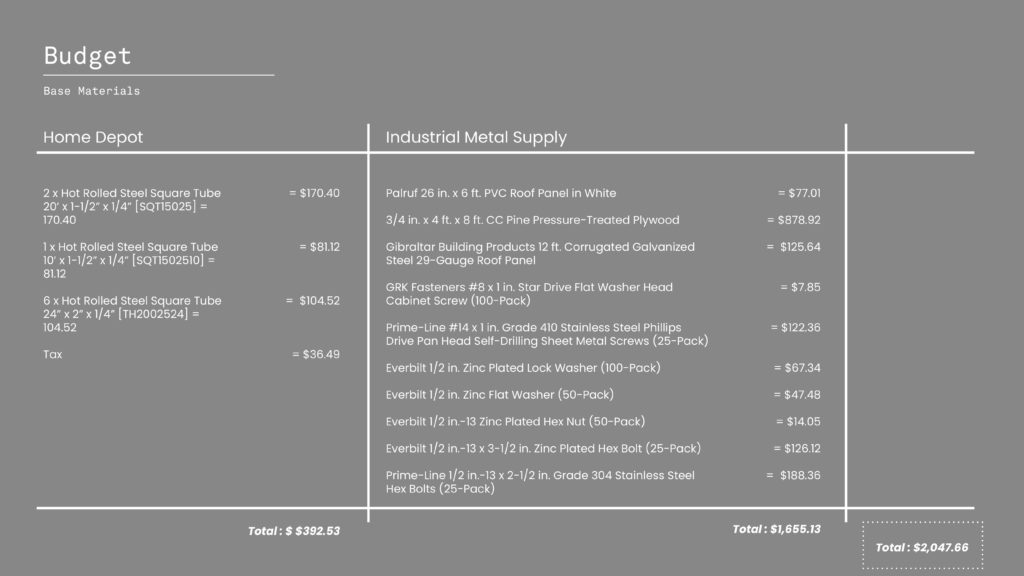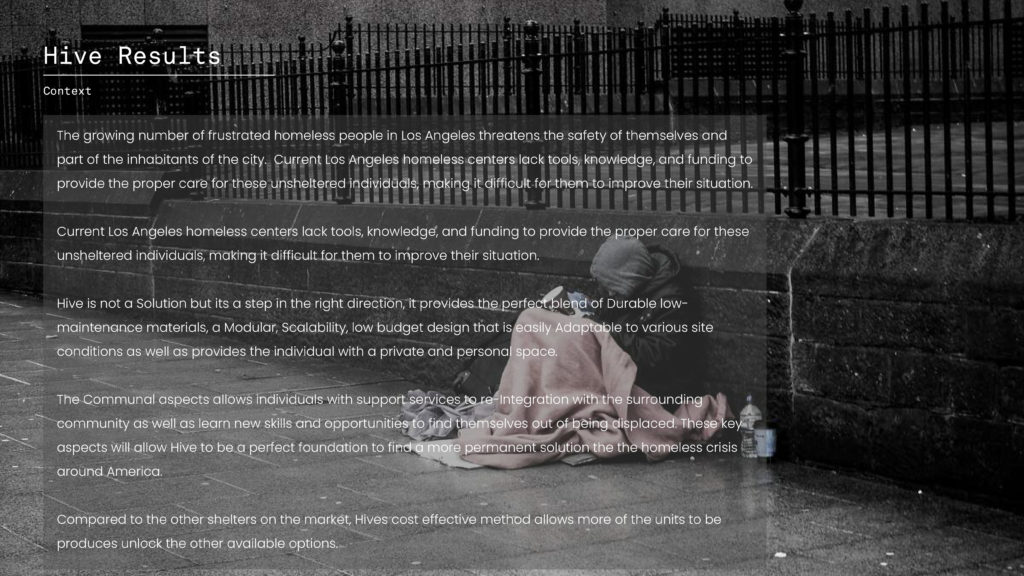Zack Eisenberg
Advanced Manufacturing
Hive: A Paradigm Shift in Homelessness Solutions” is an in-depth investigation into innovative approaches to combat homelessness, leveraging my specialization in Housing for the Homeless and the nuanced analysis of historical data. As the homelessness crisis amplifies, Hive offers an empathetic and practical solution. Its uniqueness lies in transcending the conventional provision of shelter to include personal growth, professional development, and active community engagement.
The infrastructure of Hive sets a benchmark in a modular and easy construction. Utilizing locally sourced materials from two community stores, the design process embraces the principles of affordability and durability. The structures are built employing a ratchet set, a drill, and a hand cutter, with the primary structural framework featuring welded metal joints. This design ensures a cost-effective, durable solution that can be swiftly assembled and disassembled to adapt to different environments and requirements.
Hive’s modular design enhances its flexibility, offering a high degree of adaptability to fit the needs of various landscapes. The modularity of the Hive units allows for convenient transportation and reassembly, fostering an environment that can evolve with the dynamic needs of its residents. This approach promotes reusability and sustainability, promising a longer lifespan for each Hive unit while also reducing environmental impact.
An essential component of the Hive approach is its emphasis on skills development. Understanding the importance of gainful employment for the integration of homeless individuals into society, Hive offers educational opportunities focused on trade jobs. These include carpentry, wood working , electrical work, welding and more, equipping residents with practical skills that foster independence and contribute to local economies.
Private real estate and construction companies fund the Hive shelters, aligning their corporate social responsibility efforts with community development and area gentrification. The Hive model represents an ingenious blend of social concern, resourceful construction, and sustainable living. By offering immediate shelter, sustainable living solutions, skills education, and pathways to societal reintegration, Hive establishes itself as a promising, comprehensive, and transformative solution to homelessness.
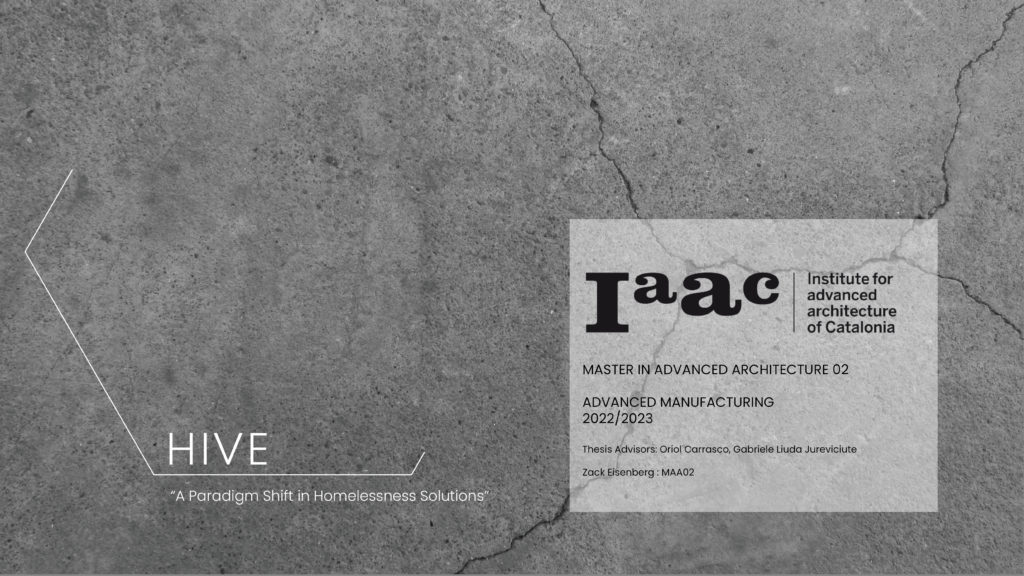
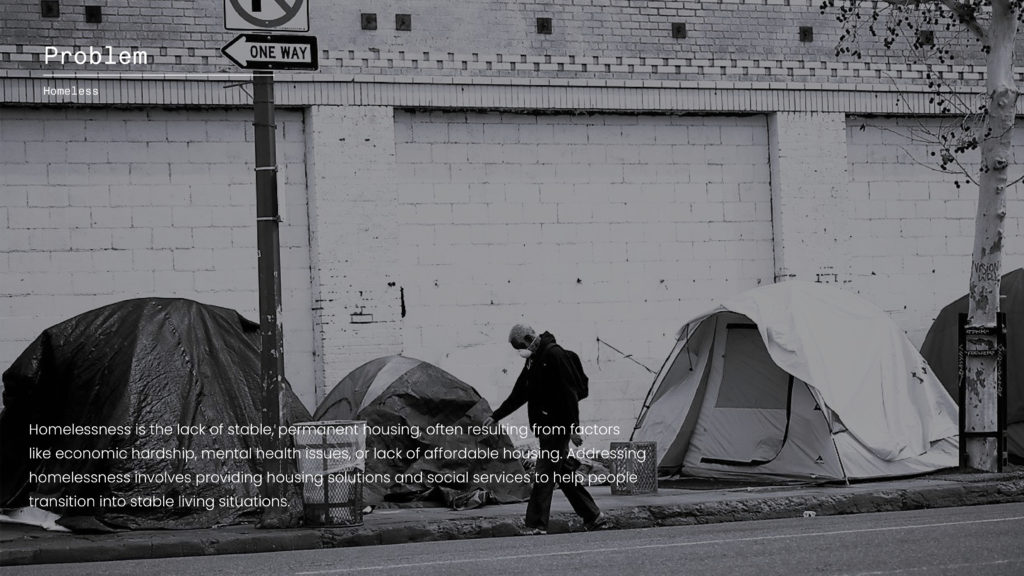
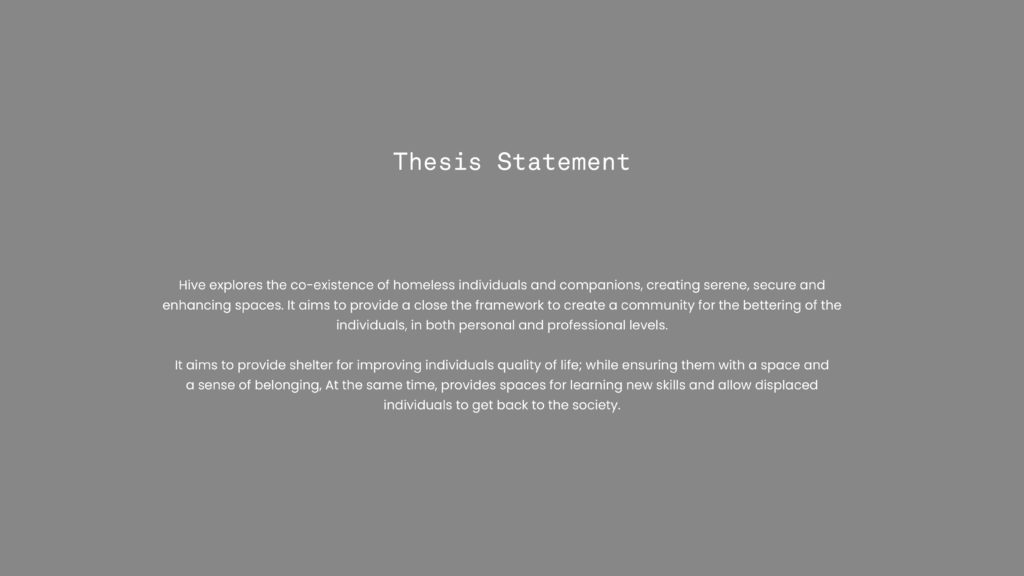
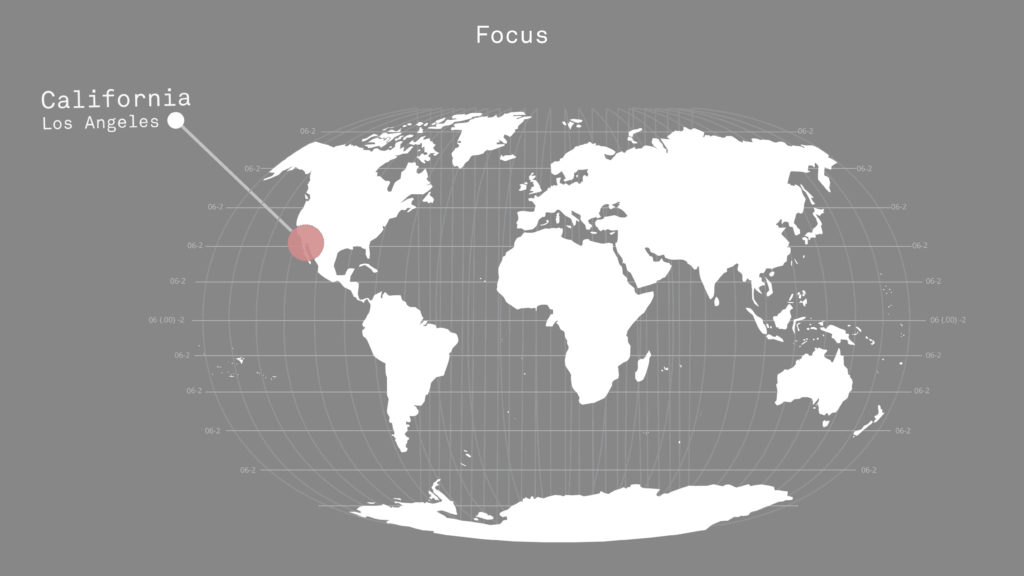
MOVIE
https://drive.google.com/file/d/1EC0cyPMJSesWl23eJSq-kwq-mdNHnP8m/view?usp=drive_link
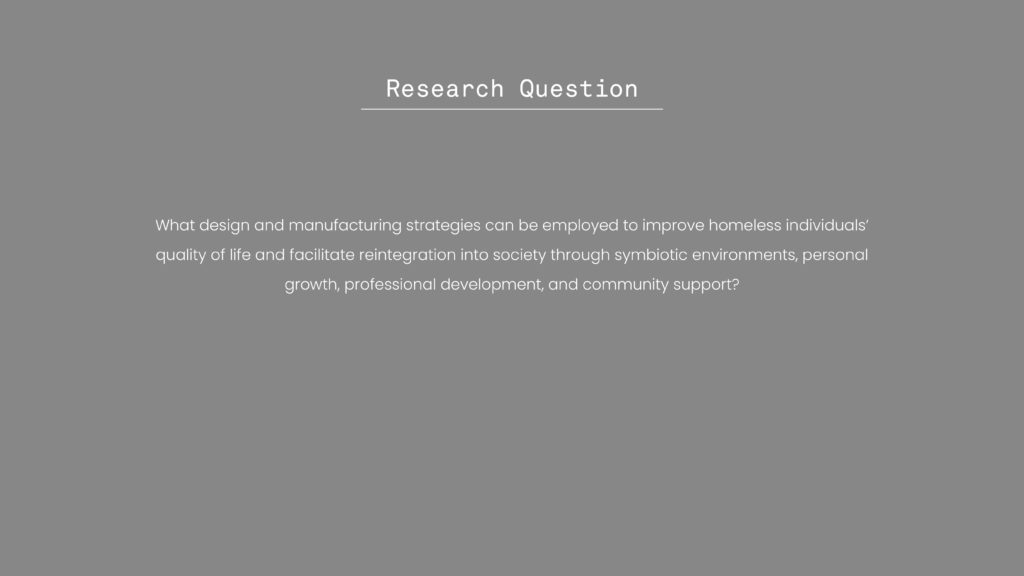
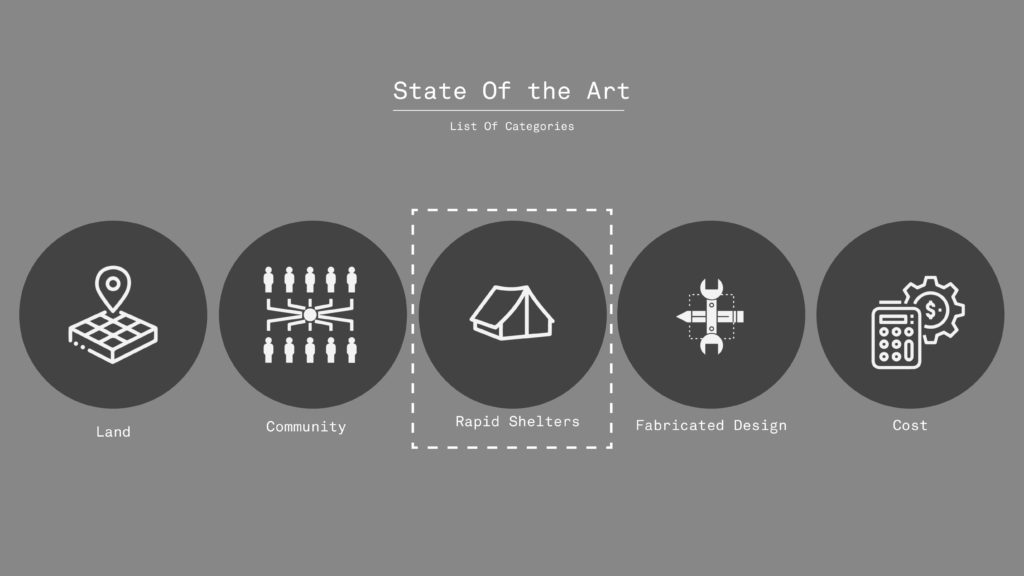
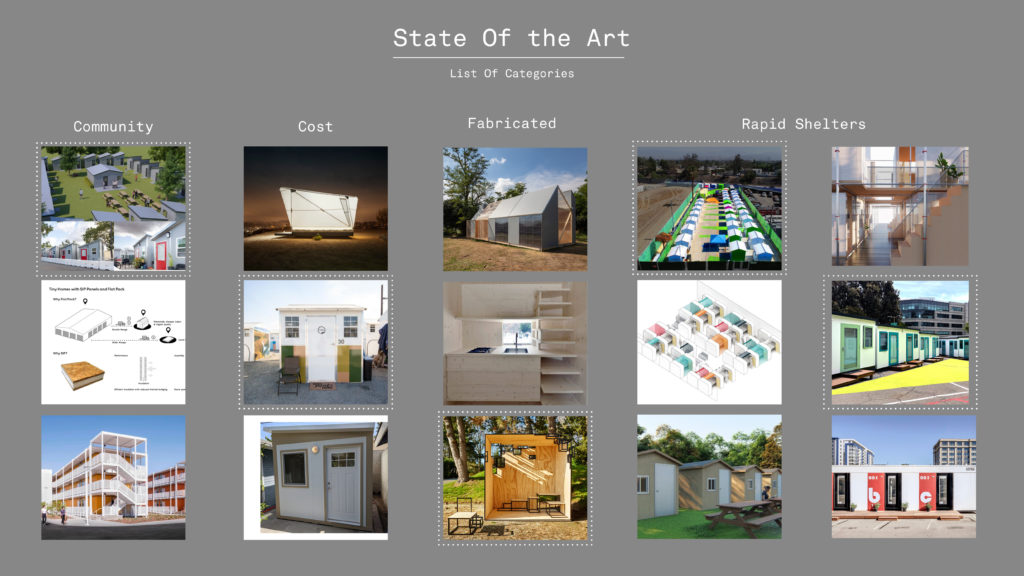
By studies Large to Small homeless shelters in the private and public sectors and going over cost, fabrication and community dynamic I learned that the best viable step to improve the overall situation was to look at Rapid Housing Projects.

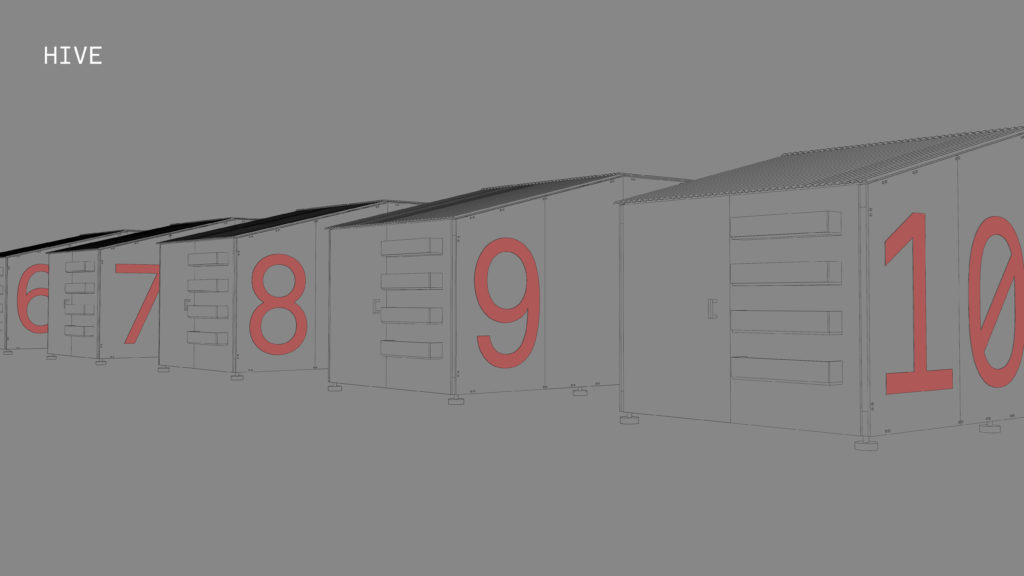
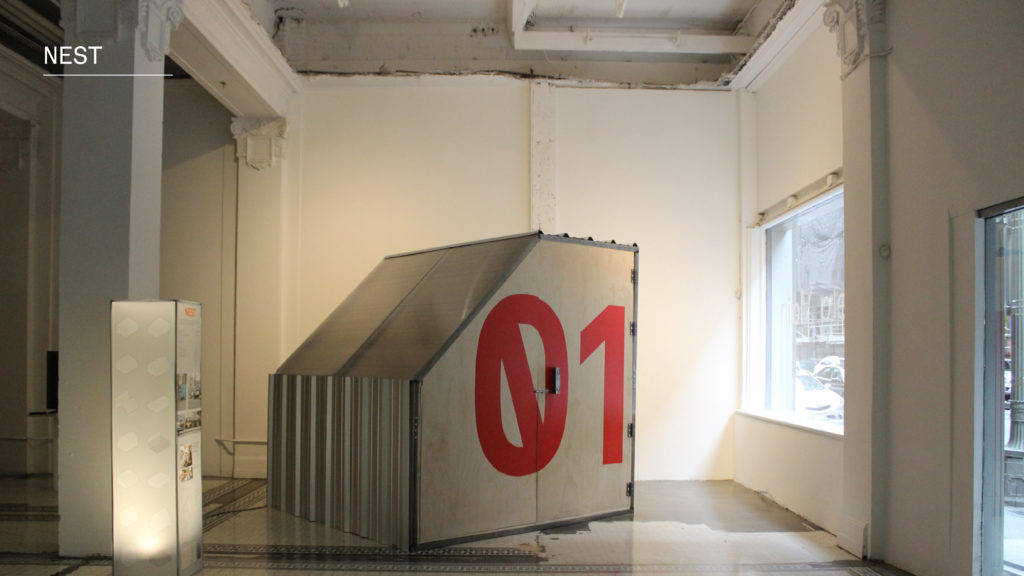
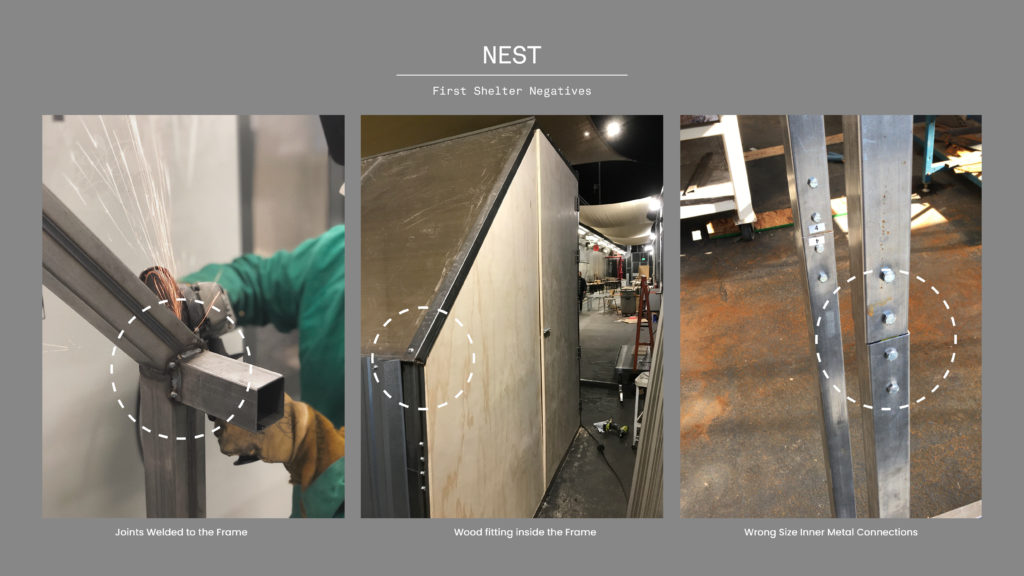
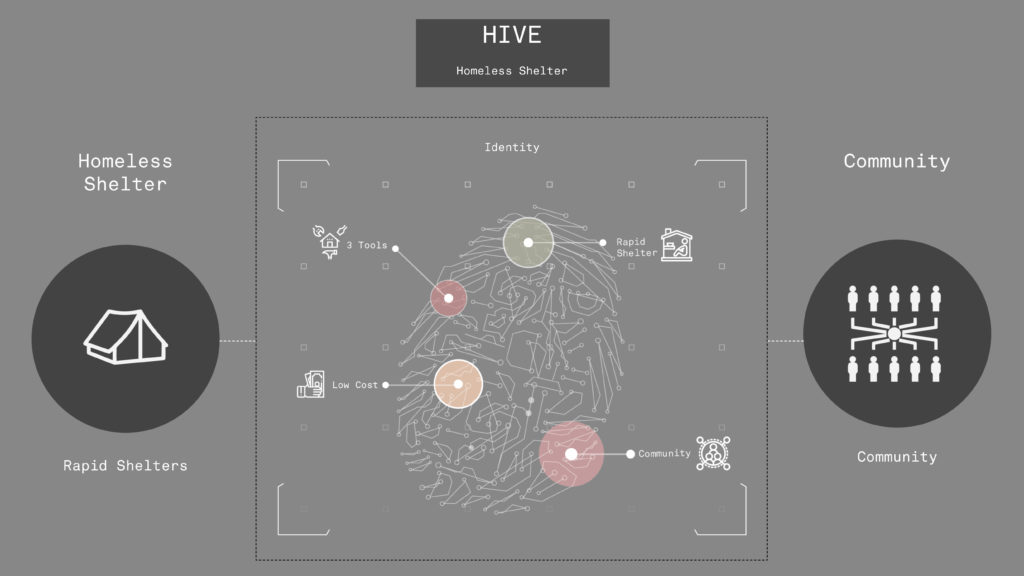
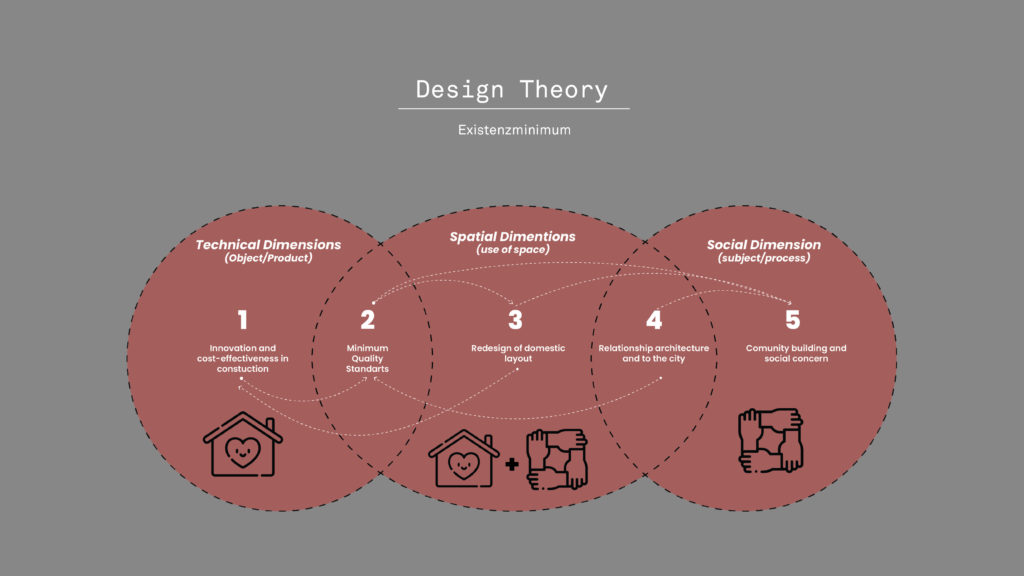
HIVE Design Theory:
Germany created Existenzminimum (minimum dwelling) during the housing crisis of the 1920s and used it as a blueprint for building public social housing.
Key designers that philosophized about this idea were Gropius, Taut, and Le Corbusier, and Alexander Klein.
There Goal was to designing inexpensive home typologies that are space-efficient and meet minimal quality requirements for housing
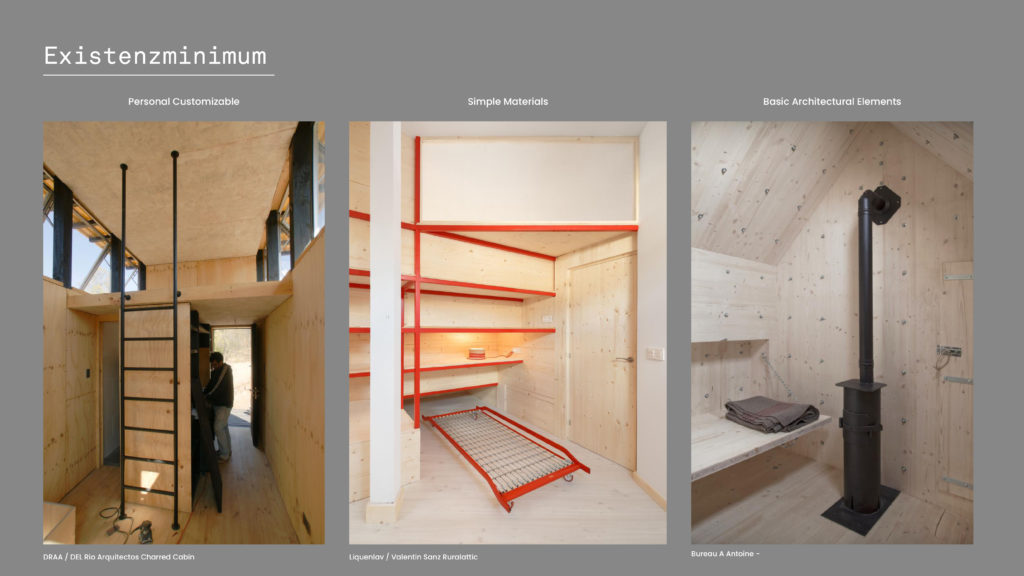
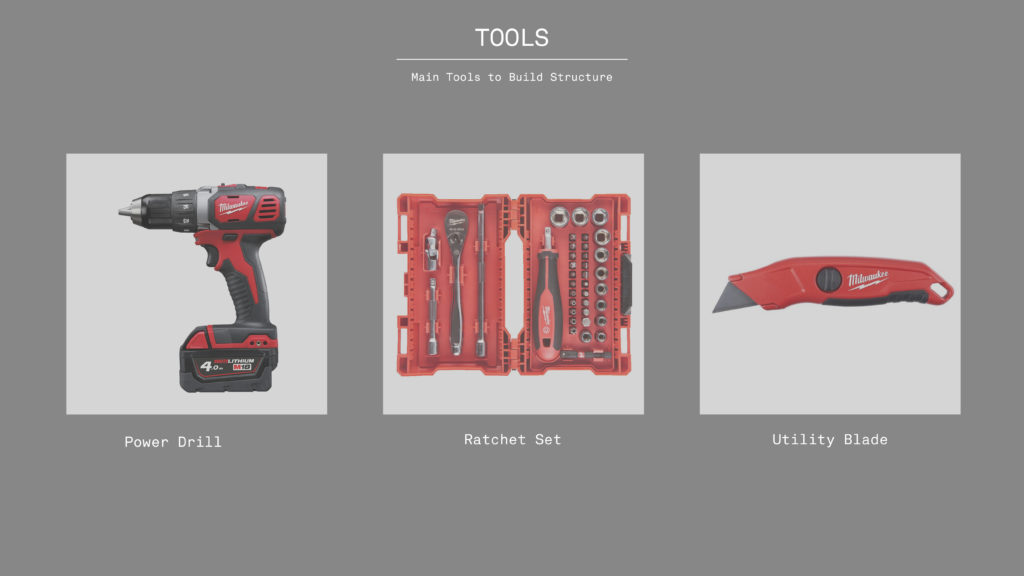
The structures are built employing a ratchet set, a drill, and a hand cutter, with the primary structural framework featuring welded metal joints. This allows for quick and easy assembly, with cost effective tools that last over time.
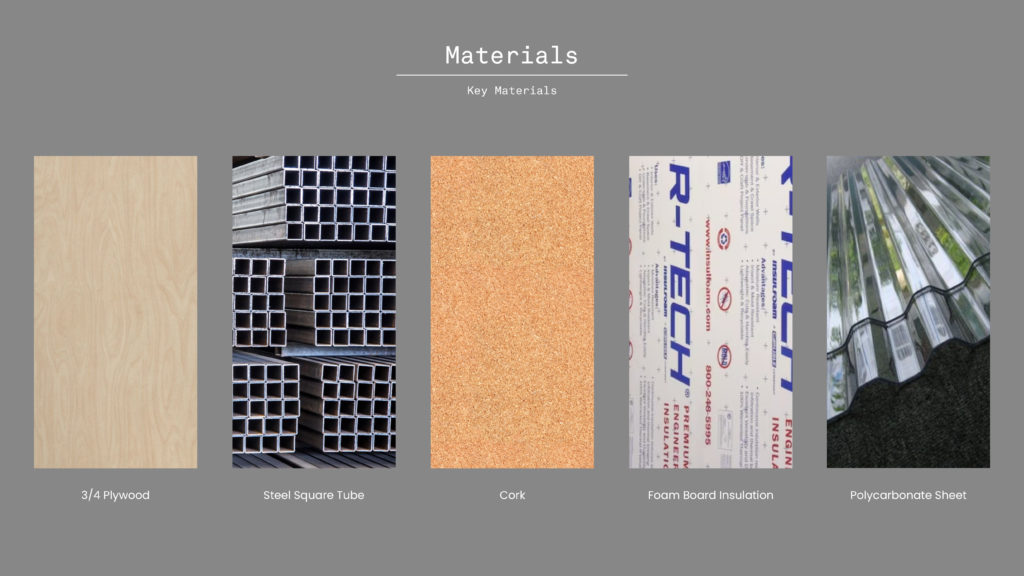
These select materials are durable, easy to maintain, and cost-effective. This ensures the shelter is built to withstand harsh conditions and usage over time, while minimizing maintenance and long-term costs.
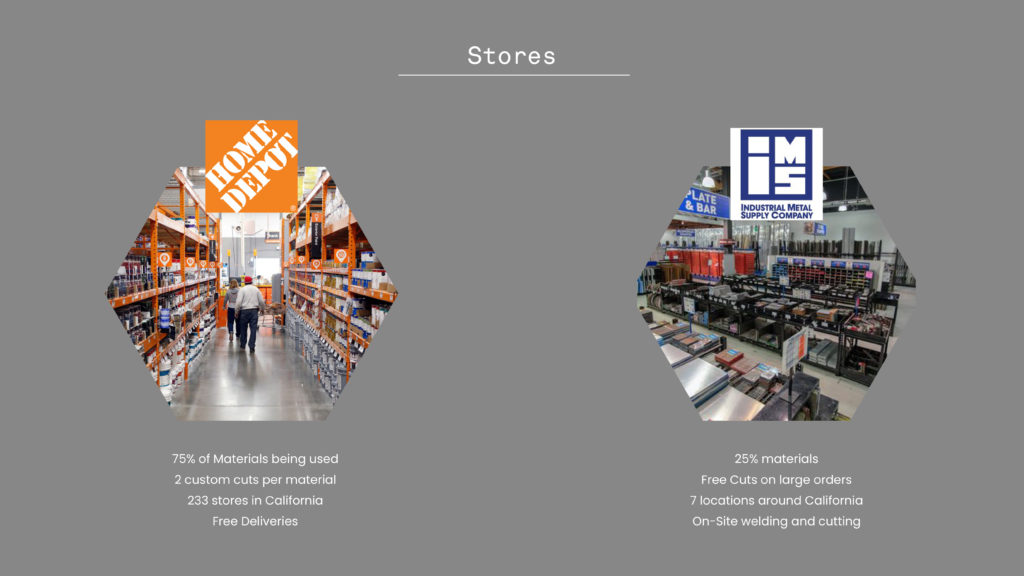
The infrastructure of Hive sets a benchmark in cost-effective construction. Utilizing materials from two large chain stores. The design process embraces the principles of affordability and durability. These shops are easily accessible and anyone have stores all over the US.
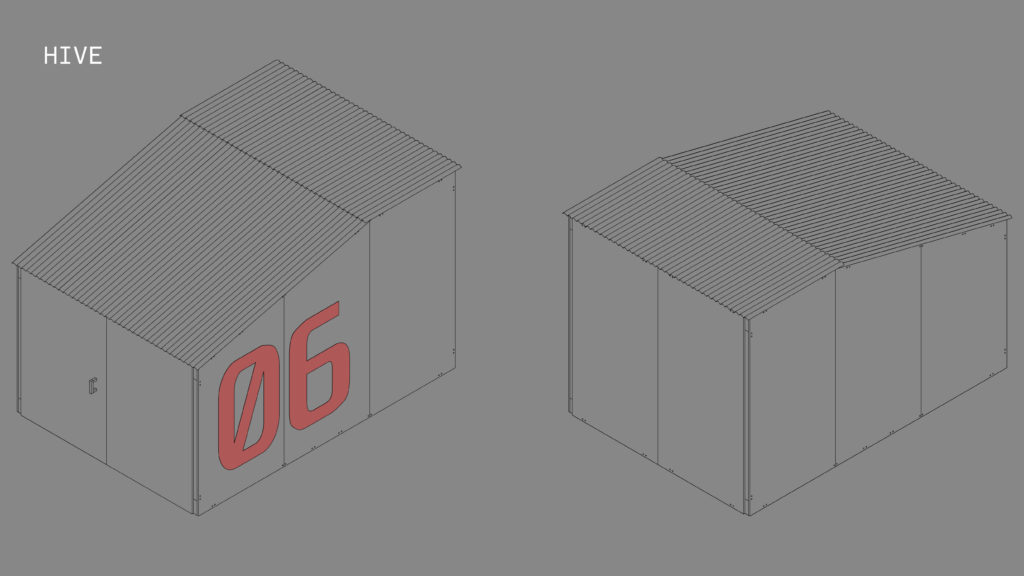
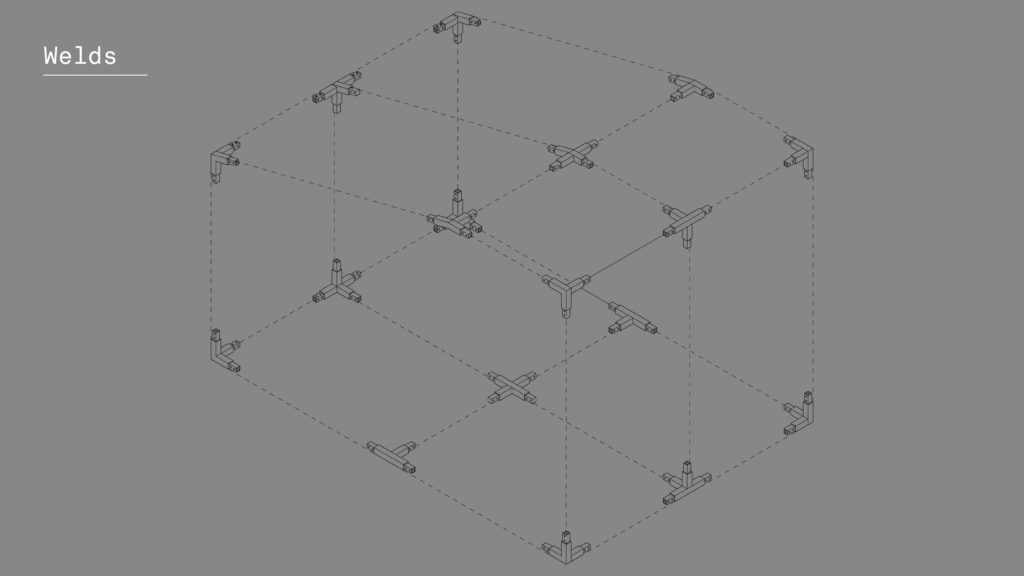
The frame of the shelter stands as the most important aspect of Hive. The pre welded joints and steel frame allows it to be reused and quickly assembled.
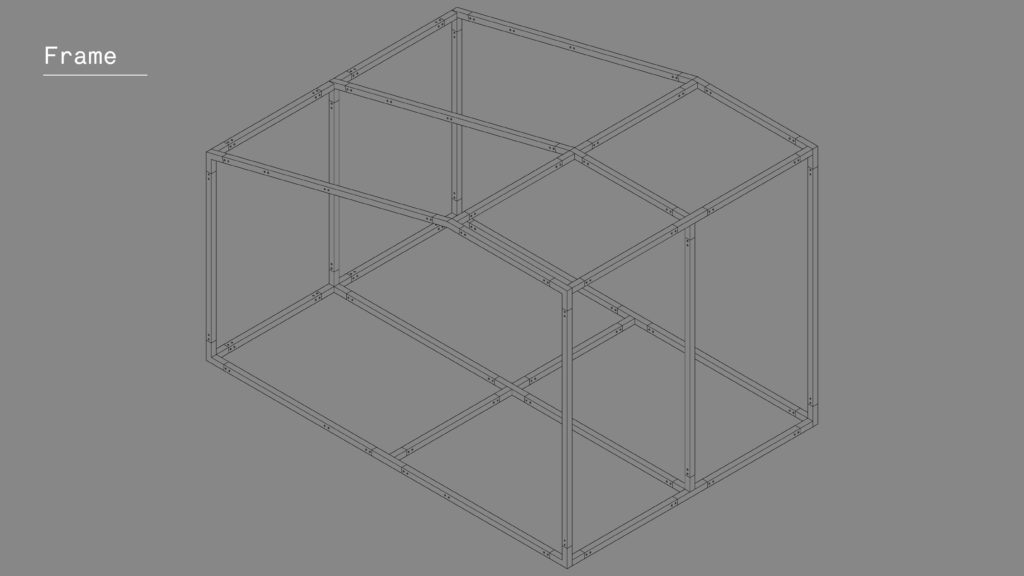
It it delivered in 44 pre cut piece with 10 unique welded pieces
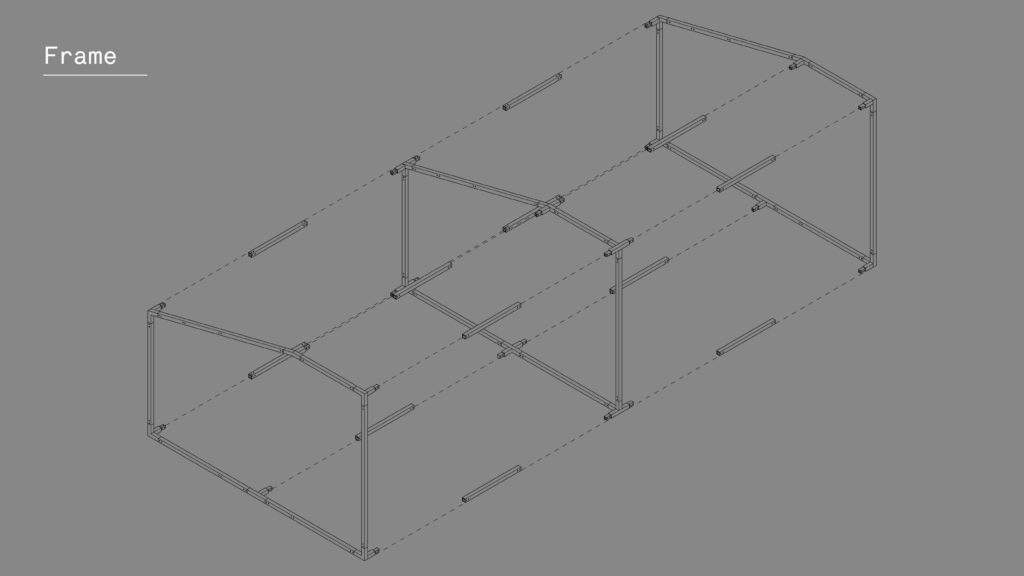
The structure uses 90 bolts that are all the same size. The modularity of the Hive units allows for convenient transportation and reassembly, fostering an environment that can evolve with the dynamic needs of its residents.
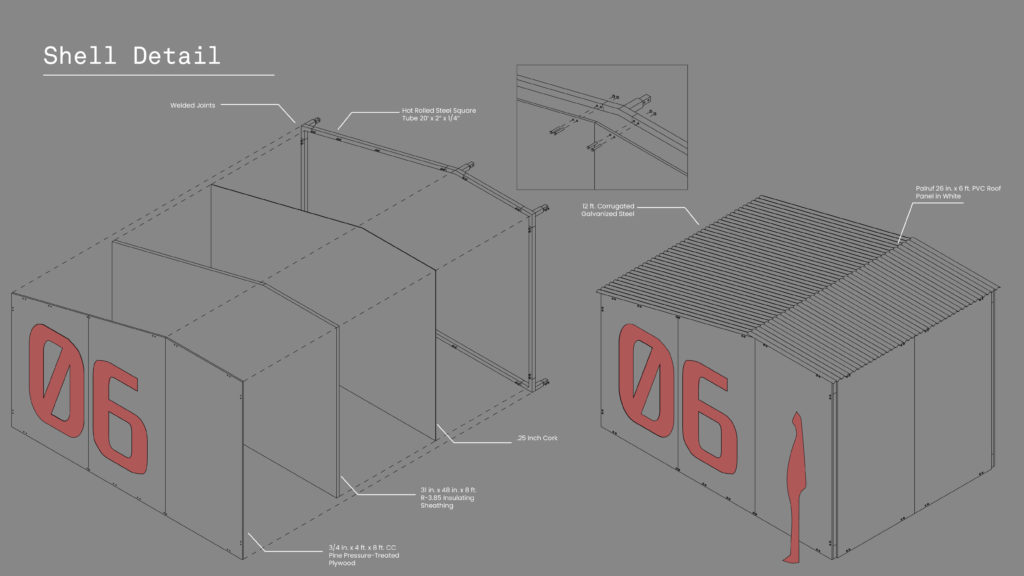
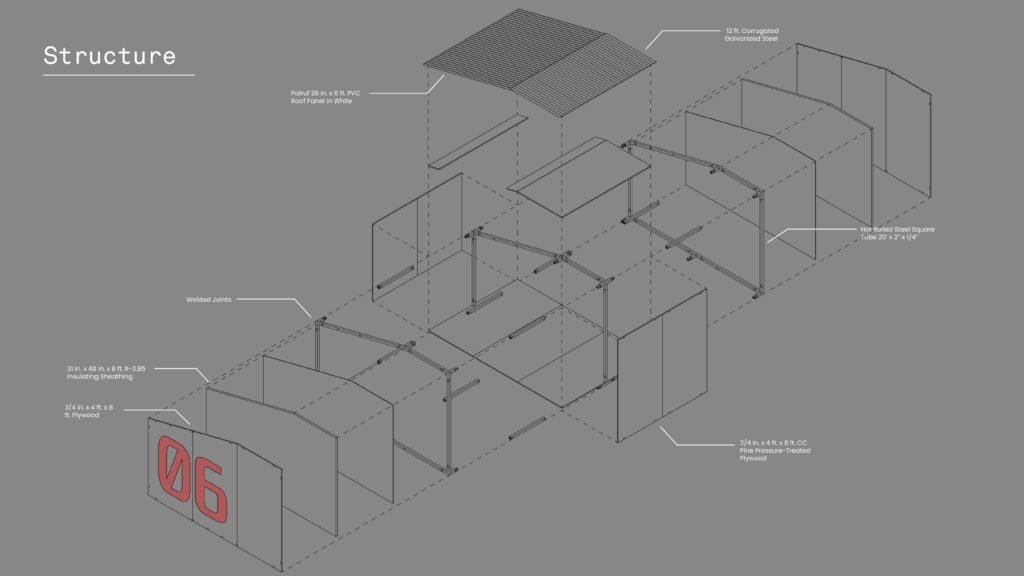
The modularity of the Hive units allows for convenient transportation and reassembly, fostering an environment that can evolve with the dynamic needs of its residents. There durable, cost effective and easy materials to replace
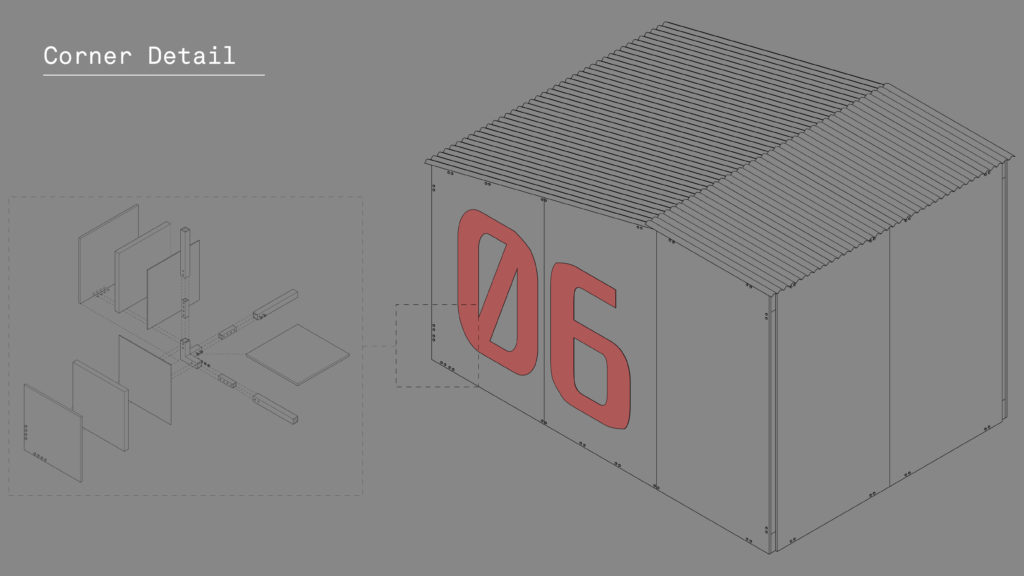
This design ensures a cost-effective, durable solution that can be swiftly assembled and disassembled to adapt to different environments and requirements. When materials are needed to be replaced they can be bought at the two stores then delivered to the site. When they get there the individuals living in the shelters can use these template made of steel to make the holes needed for them to be attached with the bolts.
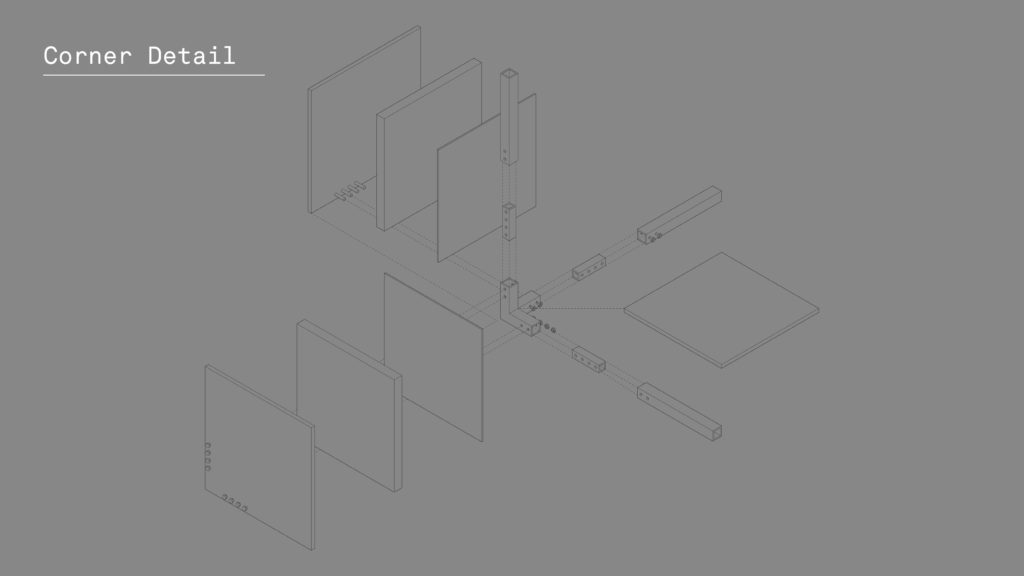
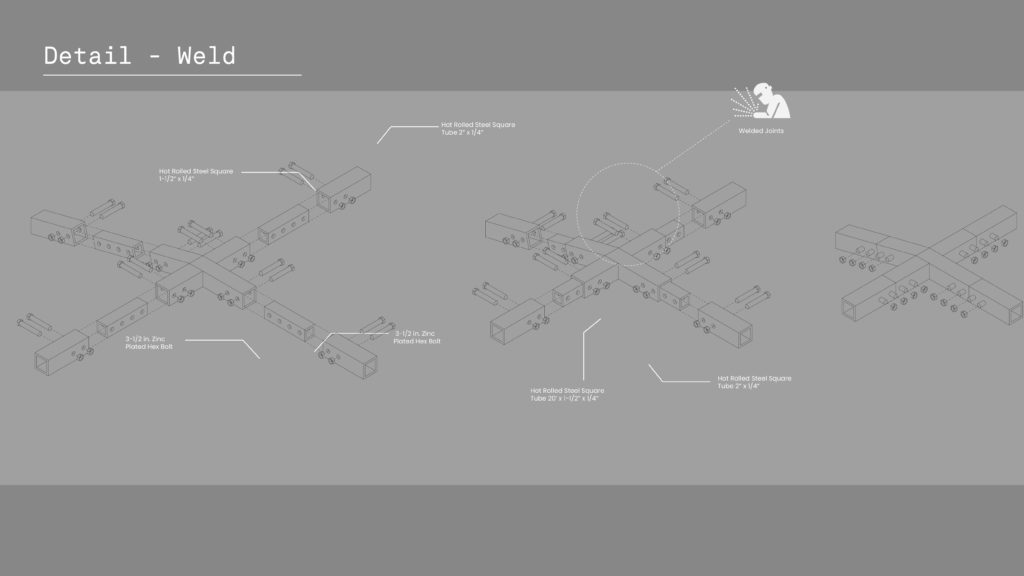
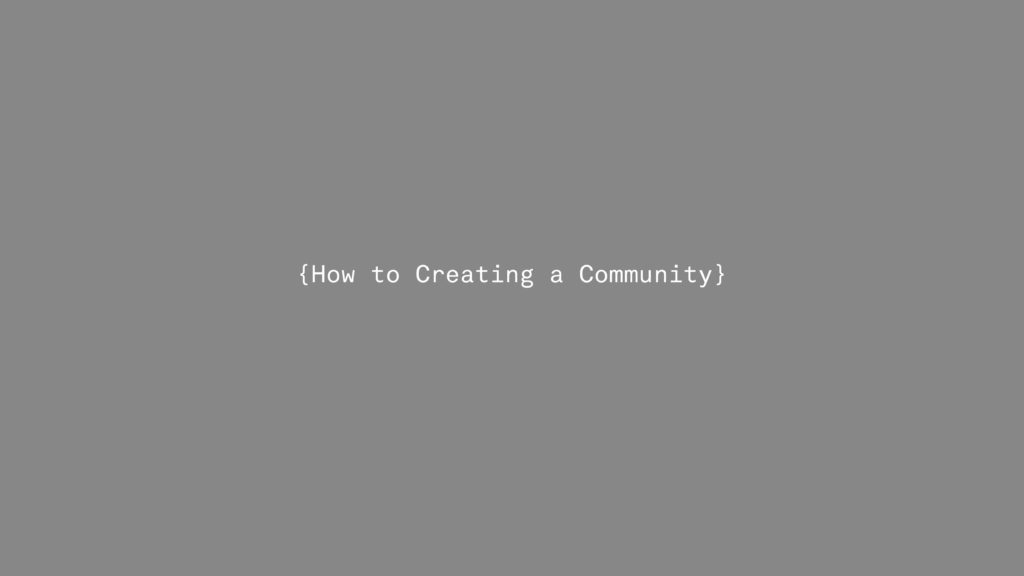
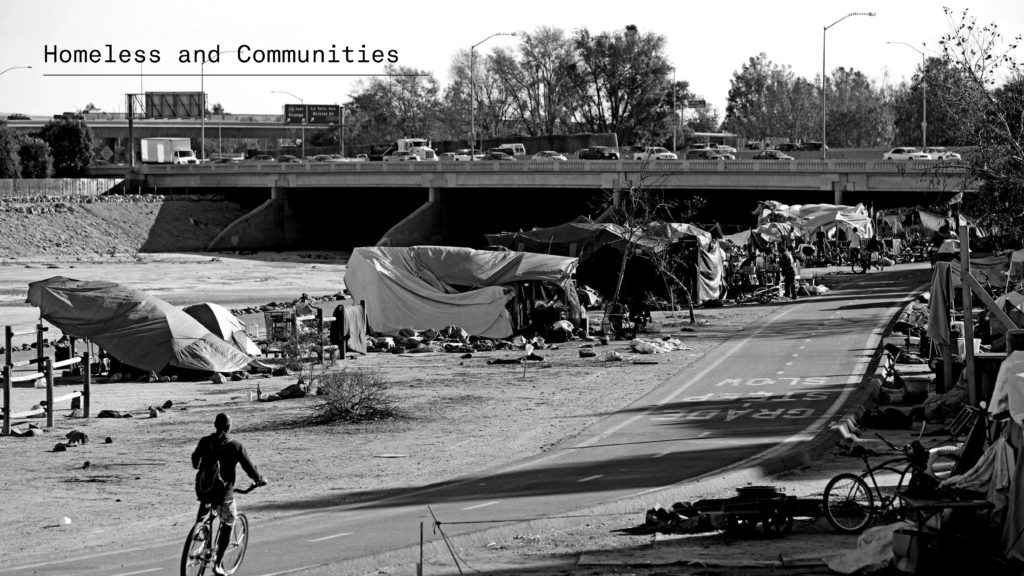
A homeless encampment is a temporary or semi-permanent gathering of individuals. These encampments can vary in size and can be found in various locations, such as under bridges, in parks, vacant lots, or in abandoned buildings. When homeless individuals are housed together, it can foster a sense of community. This community support can be essential in helping individuals work through issues that may contribute to homelessness, such as substance abuse or mental health problems. These encampments offer social interaction, a sense of belonging and allow individuals to support each other. However, life in these encampments can be really tough due to the lack of amenities and safety. While they offer some community aspects, they’re not a long-term solution to homelessness
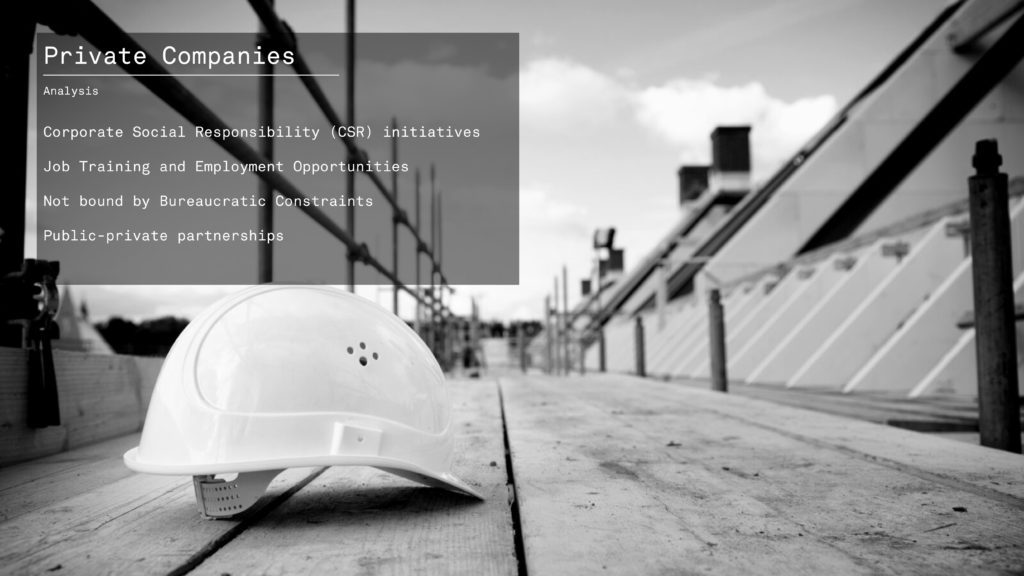
There efficiency and innovation can drive effective housing solutions. They cut through red tape, making decisions and implementing projects at a swifter pace compared to government entities. With specialized expertise in construction and property management, private firms have the know-how to develop and sustain these communities efficiently. Moreover, they may tap into financial incentives such as tax breaks, aligning their corporate social responsibility goals with investments. Additionally, their operational flexibility in procurement and hiring enables adaptive and responsive approaches in community development.

A private company can create a new team or work with a non-profit to manage housing for the homeless. This team would connect businesses, government, and charities to pool resources and services. They’d need ways to make money, such as offering services, and might get extra funds from grants or donations. Including the residents in decisions and responsibilities is key for the community’s success.
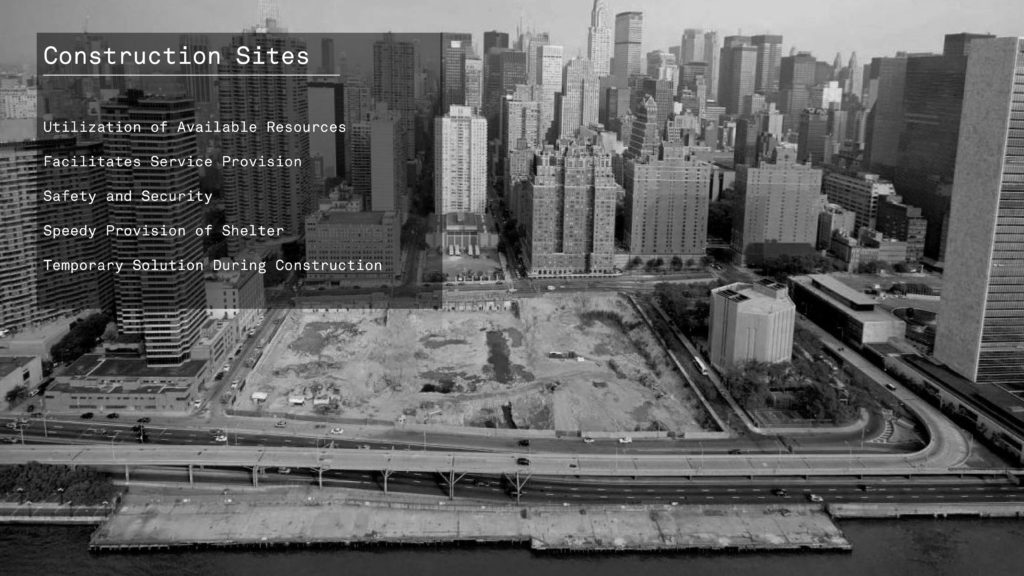
The advantage here is twofold: not only is the process significantly accelerated compared to starting a new project from scratch, but it’s also resource-efficient. Existing construction sites often have a wealth of materials and infrastructure that can be ingeniously repurposed to construct housing, be it temporary or permanent, for the homeless. Before the planned projects take off, these sites can serve as communities for the homeless. This represents an efficient and creative use of land and resources, which otherwise would have remained underutilized.
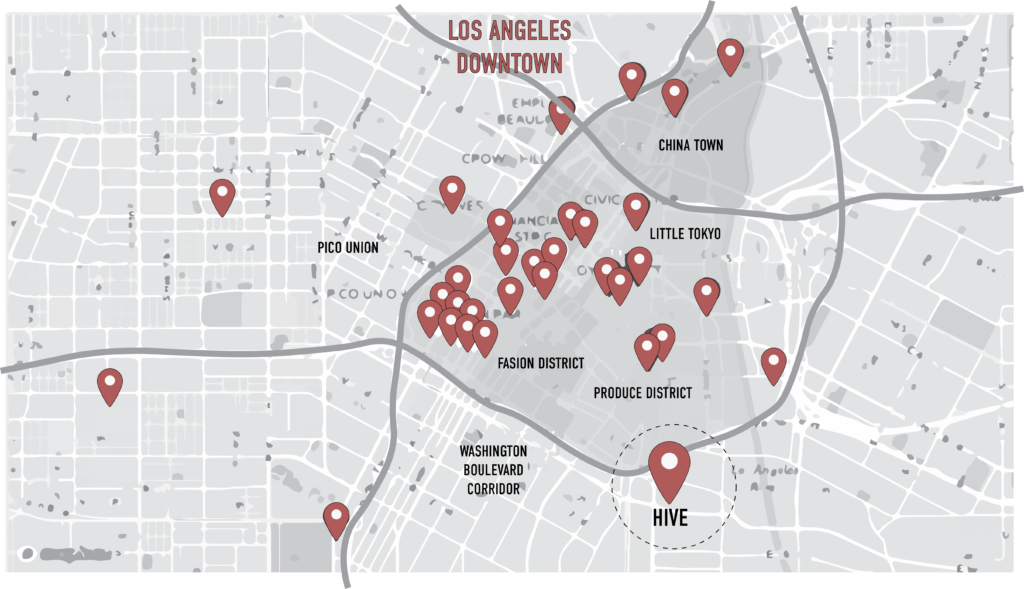
There is a total of 30 open sites at the moment just in the Downtown Los Angeles area as of 2023.
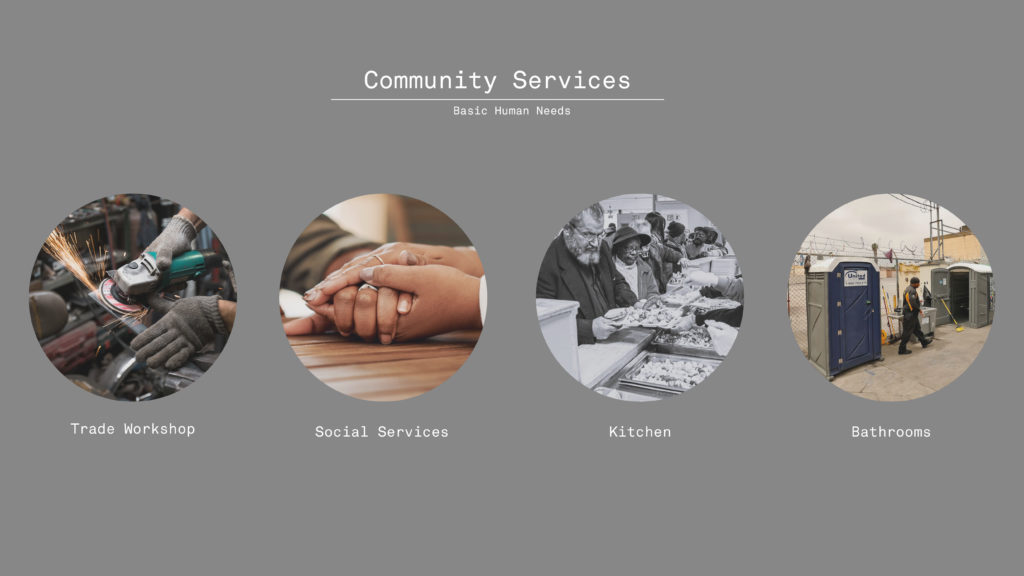
Its uniqueness lies in transcending the conventional provision of community shelter projects to include personal growth, professional development, and active community engagement.
The integration of support services within the shelter, such as healthcare facilities, case management offices, job training centers Bathrooms and livable areas can help streamline access to essential resources for individuals experiencing homelessness.
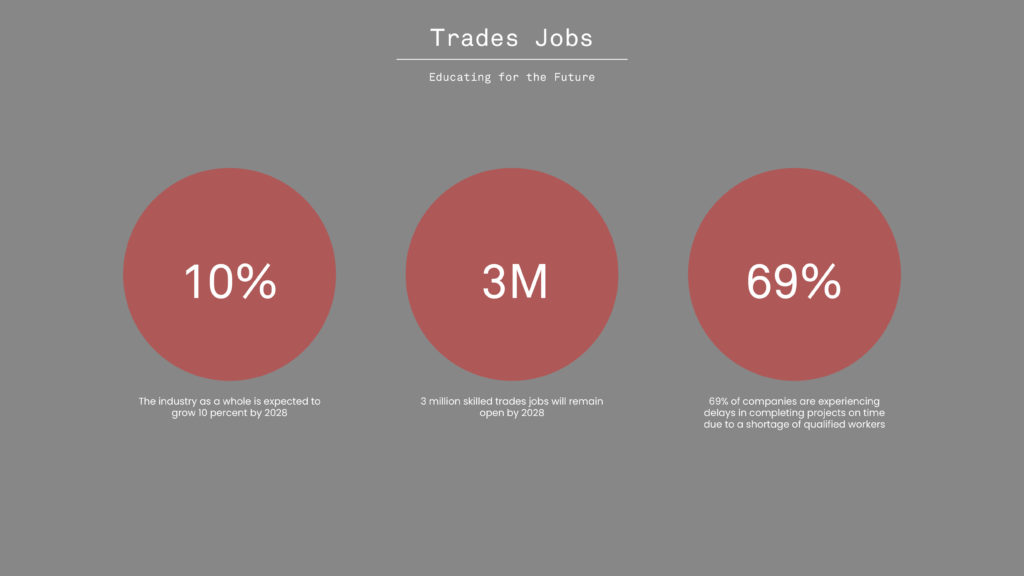
There is a significant shortage of skilled tradespeople. The industry as a whole is expected to grow 10 percent by 20285, according to the Bureau of Labor Statistics. It’s estimated that more than 3 million skilled trades jobs will remain open by 20287.
A recent survey by the National Association of Home Builders revealed that 69% of its members are already experiencing delays in completing projects on time due to a shortage of qualified workers
Even with no experience, Turmail says, jobs in the trades are easy to come by.
“If you can pass a drug test, if you’re willing to work outside, willing to be part of a team and willing to show up early and work hard, you can find a job in construction in just about every market in this country,” he explains.
By acquiring in-demand skills, these individuals can secure stable employment, paving the way to financial independence and access to housing. Additionally, engaging in meaningful work instills a sense of purpose and dignity and fosters mental well-being. Participation in the workforce also facilitates integration into the community, diminishes reliance on social assistance, and contributes to breaking the stigma associated with homelessness.
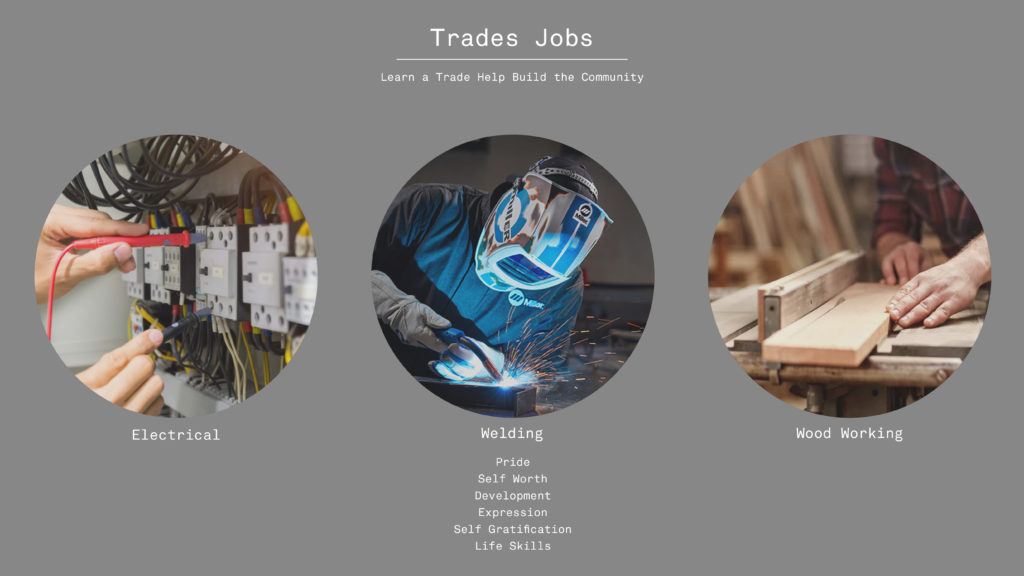
These include carpentry, Wood Working, electrical work, Welding and more, equipping residents with practical skills that foster independence and contribute to local economies. Most have criminal backgrounds that make it difficult to find work, but by going into a trade job they become a valuable resource in the job market.
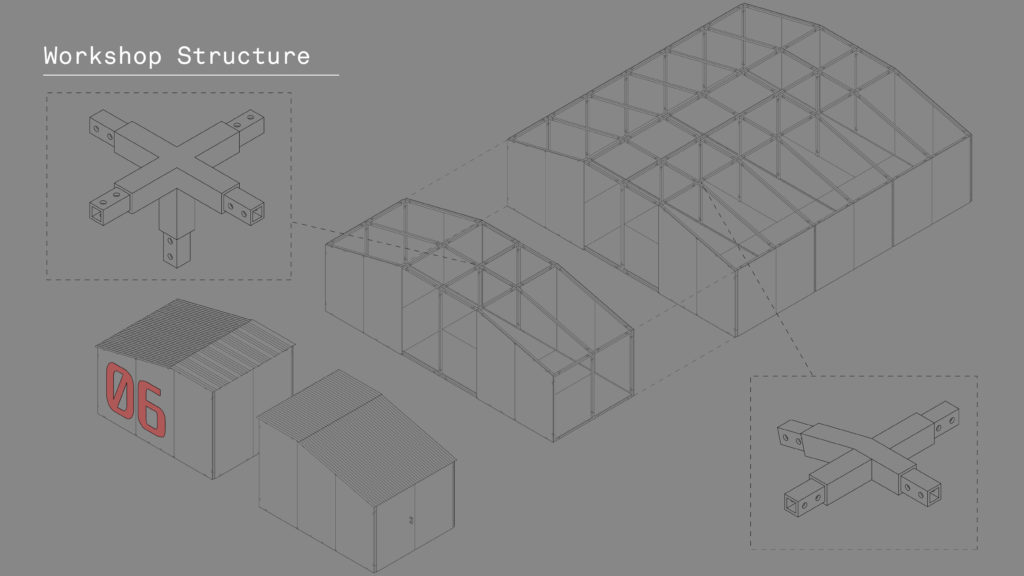
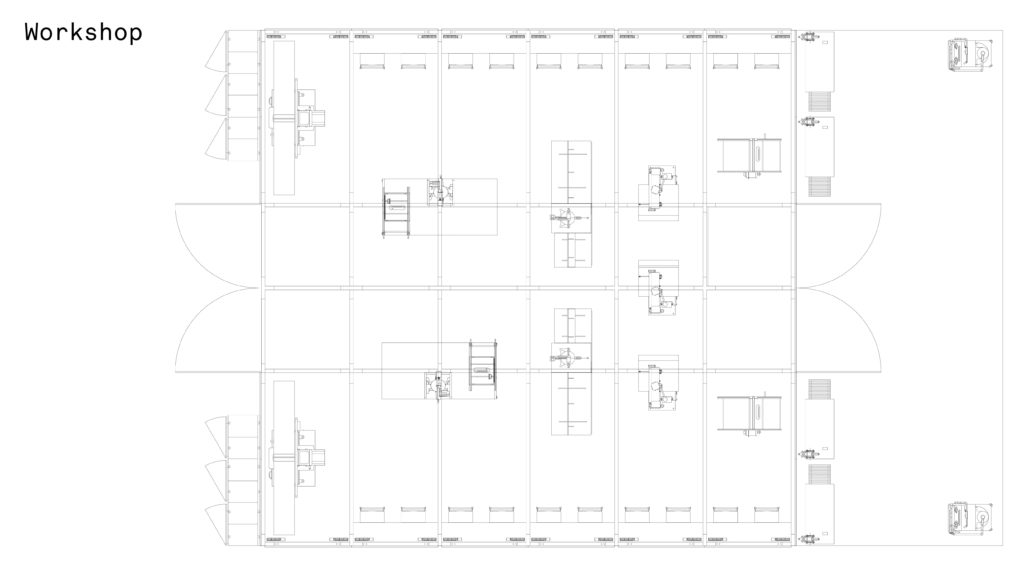
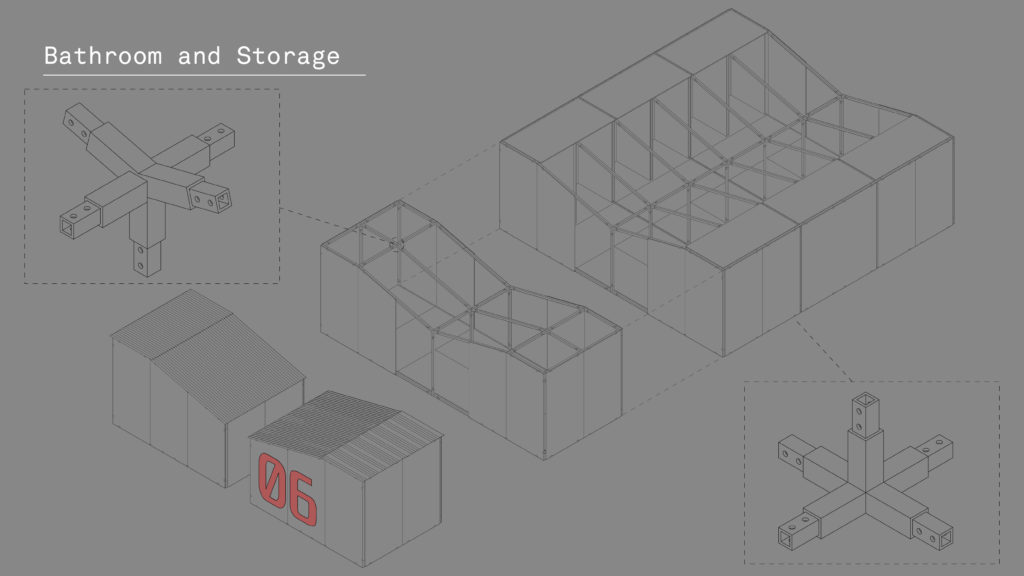
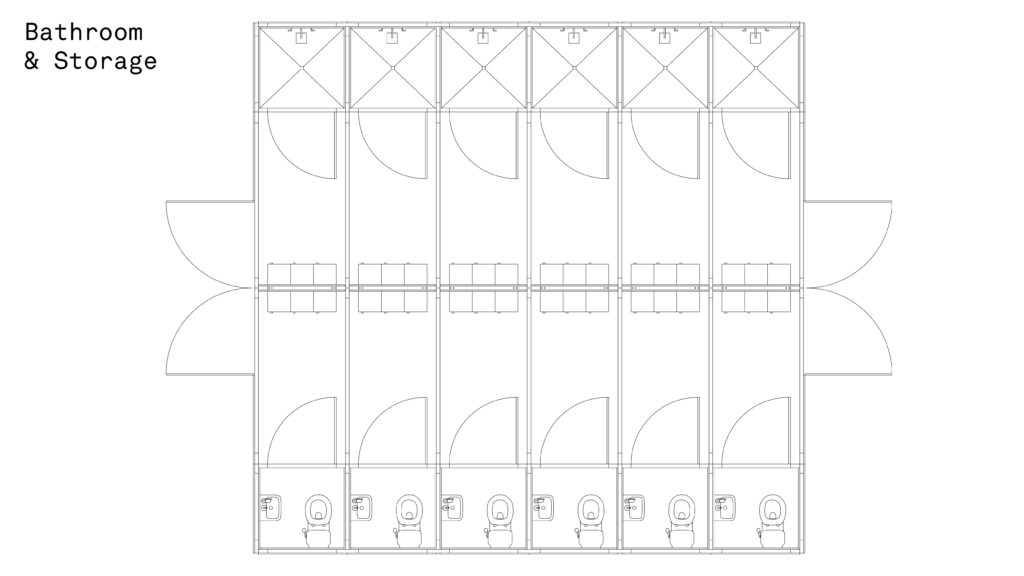
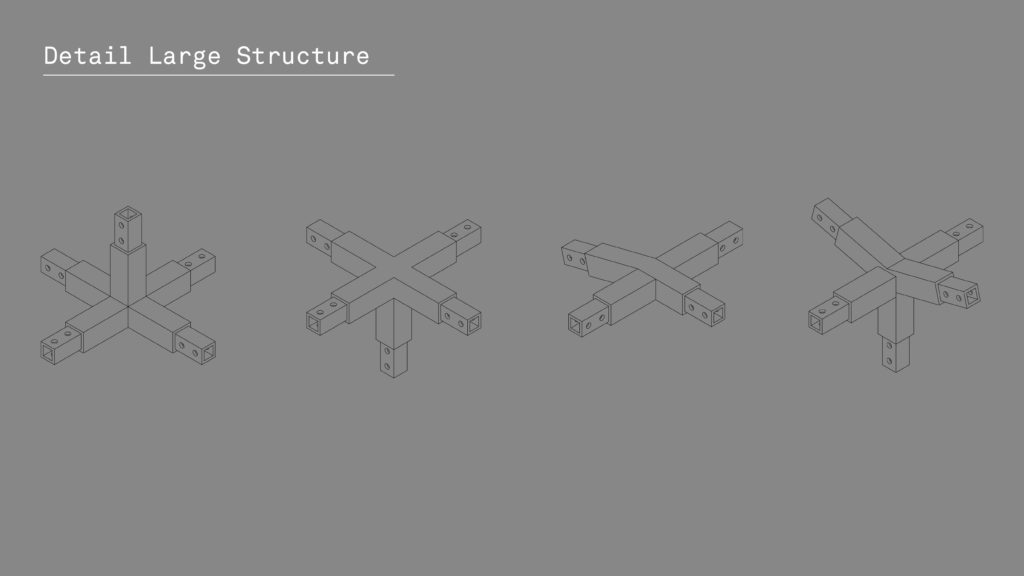
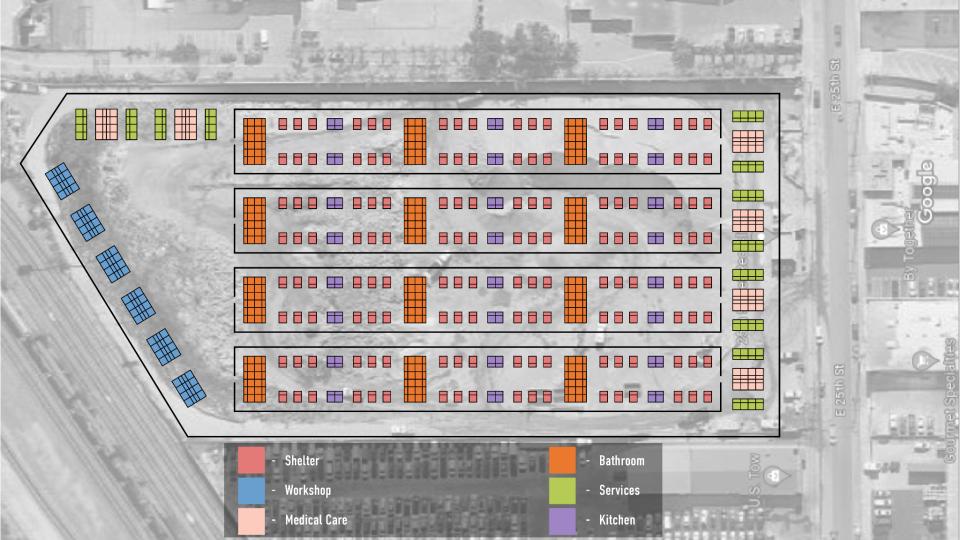
2135 E 25th St, Los Angeles, CA 90058, USA – Location of HIVE community
144 units – 144 – 220 people
12 bathroom units – 72 toilets and 72 showers
6 medical Units –
6 shops
12 Service station
24 Kitchen Units
